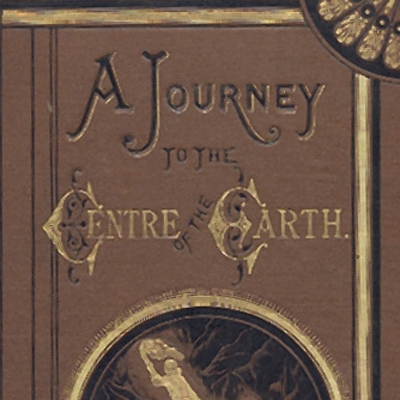In our “Reporter’s Notebook” series, we feature first-person accounts of News Office writers on life at the Institute.Jules Verne (1828-1905) is often remembered as a 19th-century founder of science fiction, whose enthusiasm for invention fills his books — from the spacecraft in From the Earth to the Moon (1865) to the submarine in 20,000 Leagues under the Sea (1869), and many more.
Rosalind Williams, MIT’s Bern Dibner Professor of the History of Science and Technology, suggests we should view Verne in a different light: A writer unhappy with science-driven globalization, whose novels speak to our own ambivalent relationship with technology today.
This side of Verne has often been hidden due to the frequent adaptation of his work for kids, noted Williams in a public lecture Tuesday, “Secondary Worlds of Jules Verne,” outlining a research project she is undertaking on 19th-century technology. “For a long time the idea was, ‘Well, Verne just writes children’s books,’” Williams noted. Instead, she asserted, Verne “deserves another look as a writer inventing modernity.”
While globalization has brought about enormous changes today, Williams noted, the key to understanding Verne’s work is that he himself lived through an era of profound globalization. Displaying a 19th-century global map with just a tiny uncharted spot on it (in Greenland), Williams said that Verne lived at a moment when “the realm of the unknown was [now] known.” Steamship lines, undersea telegraph cables, and trading routes linked Verne’s home city of Nantes, on France’s Atlantic coast, to the rest of the world.
As Williams sees it, the scientific inventions of Verne’s novels are no simple tribute to technology, but allow Verne’s characters to escape from these entanglements of the modern, industrializing, globalizing world. A great theme of Verne is “the quest for personal, individual independence,” Williams told a packed lecture room of about 60 people in Harvard’s Science Center. The talk was part of the “Subway Series” of lectures presented by MIT’s program in Science, Technology, and Society, and Harvard’s History of Science department.
Thus, figures like Captain Nemo in 20,000 Leagues under the Sea represent “the commander as desperado,” Williams said, resonating for readers (then and now) unhappy with the modern world. (Verne, for instance, abhorred the international slave trade that helped make Nantes a wealthy port.) Yet Verne was too infatuated with science to adopt a simple Luddite’s attitude toward it; he pored over scientific journals, finding ideas that surfaced in his novels.
Verne thus saw technology — in the form of submarines, spacecraft and hot-air balloons — as an escape from an already highly technologized world, an idea that may sound familiar to anyone who spends leisure time in front of a computer. Moreover, Williams suggested, Verne’s manner of absorbing huge amounts of information appears in his stories, and gives his work a contemporary tinge.
“Nemo is a cybernaut, exploring scientific data while moving through the world,” Williams said. “This is also Verne’s image of himself.” The Nautilus, the submarine from 20,000 Leagues under the Sea, was itself “very high-tech, but also had all the comforts of home.”
“Verne is not intent on saving the world,” Williams added, “but on creating a secondary world where he’s in command.” And yet, Williams suggested, the notion that anyone could truly escape society — then or now — is unrealistic. From the Internet to the oceans, Williams said, “If you think you are moving freely in space, then constraints of the system kick in.”
Williams’ own exploration of Verne is part of an intended larger manuscript comparing Verne with Robert Louis Stevenson and the English designer and writer William Morris. As in previous books Williams has written, such as Notes from the Underground: An Essay on Technology, Society, and the Imagination, she aims to use literary sources to understand the social effects of technology. For now, however, this work is simply called “The Next Book,” Williams joked.
MIT historian of science Rosalind Williams on the overlooked legacy of Jules Verne, anti-globalization visionary
Publication Date:

Caption:
The book cover of an early version of Jules Verne's 'A Journey to the Center of the Earth'





